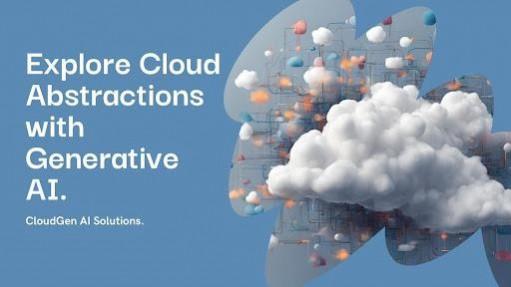
Generative AI (Gen-AI) is revolutionizing the technological landscape by enabling machines to create advanced, context-aware outputs across various domains. In this article, Karan Khanna gives insights into how cloud services facilitate the scalable deployment and adoption of Gen-AI technologies. By leveraging different cloud abstraction layers, organizations can effectively train and deploy Gen-AI models, driving innovation and enhancing user experiences across industries such as healthcare, entertainment, creative, and more.
The Evolution of Gen-AI and Cloud Abstractions
The subfield of AI, known as "gen-AI," is concerned with producing coherent and contextually appropriate material. By improving user experiences and encouraging innovation, Gen-AI is transforming industries by creating lifelike visuals and text that sound human-like. One of the reasons Gen-AI is becoming so popular is that cloud providers are making large-scale datasets and computational resources more accessible. According to McKinsey & Company, Gen-AI might boost the global economy by up to $15.7 trillion by 2030.
In this context, cloud abstractions are vital because they supply the scalability and infrastructure needed to train and deploy Gen-AI models effectively. These abstractions are as follows: IaaS for infrastructure, PaaS for platforms, SaaS for software, and FaaS for functions. The unique capabilities offered by each layer meet the various facets of Gen-AI deployment.
Layers of Cloud Abstractions
Cloud abstractions enable organizations to focus on core business logic while leveraging cloud power. These services are categorized by control and management levels. Infrastructure as a Service provides virtual machines and storage, enabling services on platforms like Amazon EC2, with the market expected to reach $201.83 billion by 2027.
Platform as a Service manages platforms like Heroku and AWS Elastic Beanstalk for deploying applications, which are projected to reach $164.3 billion by 2026. Software as a Service delivers internet-based applications, eliminating local installation and maintenance, with vendors like Shopify and Salesforce, and is expected to reach $307.3 billion by 2026. Function as a Service allows developers to execute tasks without managing infrastructure, with AWS Lambda as an example, projected to grow to $30.1 billion by 2025.
Gen-AI's Capabilities and Real-World Examples
Gen-AI models generate novel content by learning from vast data and creating realistic images, videos, audio, and animations. Models like StyleGAN and GPT-3 revolutionize fashion, entertainment, gaming, and natural language processing. Real-world examples include Adobe Firefly for image and graphic generation and OpenAI's GPT-3 for chatbots, content creation, and code generation, showcasing Gen-AI's transformative potential across various industries.
Deployment Strategies and Cloud Abstractions
Depending on their requirements and resources, organizations employ different strategies when deploying Gen-AI systems. Some choose a private approach, developing their Gen-AI components in-house to maintain complete control over the development process and ensure data privacy. However, this requires significant investment in computational resources and expertise.
Others opt for a hybrid approach, utilizing pre-built Gen-AI services like OpenAI's GPT-3 to accelerate development and reduce costs, allowing them to balance control, cost, and scalability. Cloud abstractions are essential for efficient resource allocation, streamlined deployment pipelines, and scalability. By leveraging them, companies can handle varying workloads without overprovisioning resources.
The Future of Gen-AI and Cloud Abstractions
The convergence of Gen-AI and cloud abstractions represents a significant milestone in the AI revolution. As more organizations adopt Gen-AI and harness the capabilities of cloud platforms, AI-powered solutions are expected to become integral to daily operations across industries. This symbiotic relationship between Gen-AI and cloud services will drive innovation, efficiency, and growth, shaping a future where artificial intelligence augments human capabilities and enhances overall well-being.
In conclusion, continued collaboration between AI researchers, cloud providers, and domain experts will be crucial in unlocking Gen-AI's full potential and addressing challenges related to data privacy and ethical considerations. As Gen-AI technologies evolve, we can anticipate even more groundbreaking applications that transform how we live and work.









!['Had denied Housefull franchise as they wanted me to wear a bikini': Tia Bajpai on turning down bold scripts [Exclusive]](https://data1.ibtimes.co.in/en/full/806605/had-denied-housefull-franchise-they-wanted-me-wear-bikini-tia-bajpai-turning-down-bold.png?w=220&h=138)



